

 |
Search the Site with

|
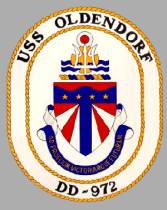
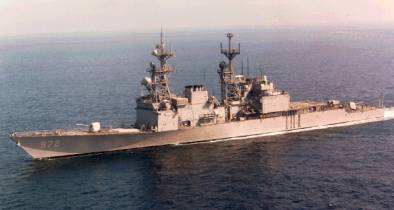
USS OLDENDORF was the tenth SPRUANCE - class destroyer and the first ship in the Navy named after Admiral Jesse B. Oldendorf, one of the most distinguished surface warfare flag officers to serve during World War II. Last homeported in San Diego, Calif., the OLDENDORF was sunk as a target during a live-fire exercise off Hawaii by the USS RUSSELL (DDG 59) on August 22, 2005.
| General Characteristics: | Awarded: January 26, 1972 |
| Keel laid: December 27, 1974 | |
| Launched: October 21, 1975 | |
| Commissioned: March 4, 1978 | |
| Decommissioned: June 20, 2003 | |
| Builder: Ingalls Shipbuilding, West Bank, Pascagoula, Miss. | |
| Propulsion system: four General Electric LM 2500 gas turbine engines | |
| Propellers: two | |
| Blades on each Propeller: five | |
| Length: 564,3 feet (172 meters) | |
| Beam: 55,1 feet (16.8 meters) | |
| Draft: 28,9 feet (8.8 meters) | |
| Displacement: approx. 9,200 tons full load | |
| Speed: 30+ knots | |
| Aircraft: two | |
| Armament: two | |
| Crew: approx. 340 |
Crew List:
This section contains the names of sailors who served aboard USS OLDENDORF. It is no official listing but contains the names of sailors who submitted their information.
About the Ship’s Coat of Arms:
 The Shield:
The Shield:
The shield commemorates Admiral Oldendorf's "crossing of the T" in the brilliant and decisive victory at Surigao Strait during World War. The vertical blue bar, resembling a narrow passage or waterway, refers to Surigao Strait. The eight red and white sections of the backgound represent the total losses of the enemy in terms of the number of ships sunk, crippled or damaged. The blue chief at the top crossing the vertical bat at center forms the letter "T" in reference to the crossing of the "T" battle plan. The upper section alludes to the red sky over the night battle of Surigao Strait. Four stars connote Admiral Oldendorf's highest rank.
The Crest:
The crest symbolizes the award of the Navy Cross, the Navy's highest decoration, to Admiral Oldendorf for exceptional leadership and heroism in the Battle of Surigao Strait. The trident signifies authority and power and the annulet with red center suggest the muzzle of a gun in action. The two wavy bars are indicative of World War II and the Pacific theater.
The Motto:
The ship's motto, "Ad Proelium Victoriamque Futuram" (To the Fight and Victory Ahead) is a translation from Admiral Oldendorf's memoirs regarding his charge to his forces on the eve of the decisive battle.
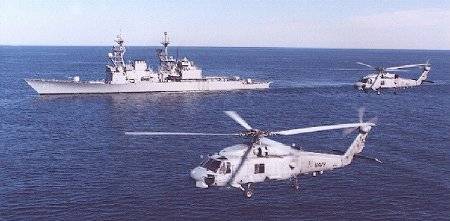
About the Ship’s Name, about Admiral Jesse B. Oldendorf:
A native Californian, Admiral Oldendorf was catapulted to fame due to his overwhelming victory at the Battle of Suriagao Strait on 24-25 October 1944. Suriagao Strait was one of a series of battles that took place in the aftermath of General Douglas MacArthur's return to the Philippines in 1944. History books have referred to these various naval engagements as the Battle of Leyte Gulf. In response to the American amphibious landing at Leyte Gulf, the Imperial Japanese Navy mounted a massive counterattack, seeking to reverse the course of the Pacific war. Their objective was the huge collection of amphibious ships and transports anchored in Leyte Gulf. One of their counterattacks involved a Japanese force of two battleships, three cruisers and eight destroyers whose mission was to pass through Surigao Strait at night and surprise the American shipping in Leyte Gulf.
Alerted by aerial reconnaissance, Admiral Oldendorf deployed his forces of old battleships, cruisers, destroyers, and PT boats at the point of exit from Surigao Strait. Ironically, five of his six battleships were survivors of the Japanese attack on Pearl Harbor. These veterans had been salvaged and refitted and were anxious for a chance to even the score. "Even" it they did! In the nighttime darkness, the Japanese force was attacked first by the PT boats and destroyers, and then as the range closed, by heavy gunfire from the cruisers and battleships crossing back and forth at the head of Surigao Strait. Passing ahead of the enemy column in the classic "crossing the T" maneuver, Admiral Oldendorf's Pearl Harbor veterans rained heavy projectiles on the hapless enemy.
Only one Japanese cruiser and destroyer survived the carefully planned attack. None of the U. S. vessels were sunk or even seriously damaged. The tactical disposition and the battle plan of Admiral Oldendorf were perfect!
Although no one knew it at the time, this was to be the last time in which battleships would engage each other in a classic surface to surface battle line-action. As the distinguished naval historian, Rear Admiral Samuel Eliot Morison, wrote of the battle:
"In the unearthly silence that followed the roar of Oldendorf's 14" and 16" guns in Surigao Strait, one could imagine the ghosts of all great admirals, standing at attention to salute the passing of a kind of naval warfare they all understood. For in the opening minutes of 25 October 1944, the Battle Line became as obsolete as the row-galley tactics of centuries before."
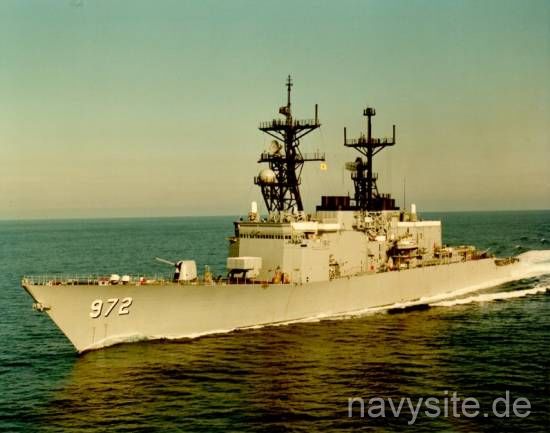
History of USS OLDENDORF:
USS OLDENDORF is the 10th of the 31 ship SPRUANCE-class construction program. She is the first US Navy ship to bear the name Oldendorf and was designed and built by Ingalls Shipbuilding Division of Litton Industries in Pascagoula, MS. She was commissioned on March 4, 1978.
USS OLDENDORF took part in the surface exercise Eager Sentry, as part of the larger Exercise Native Fury '94. Involving Kuwaiti and British military members, the exercise was the largest naval exercise ever conducted in Kuwait. It was conducted from April 4 through 25, to demonstrates US resolve to support the peace in the Gulf region after ousting Iraq from Kuwait three years prior. Native Fury comprised several exercises under one umbrella. In the namesake exercises, two Maritime Prepositioning Ships sailed from their homeport of Diego Garcia and discharged more than 1,000 tanks, artillery pieces and vehicles at the port of Shuaibah, starting April 5. Approximately 2,000 marines and sailors from I Marine Expeditionary Force, 7th Marine Regiment, 1st Force Service Support Group and Naval Beach Group One arrived by air, off-loaded and convoyed the equipment to a training range north of Kuwait City. There, they trained with the Kuwaiti Army and British Royal Marines, perfecting tactics which would delay, and perhaps turn back, any repeat of the invasion of Kuwait. Other elements of Native Fury involved the surface exercise Eager Sentry; Eager Archer, an aerial exercise; and Eager Express with explosive ordnance disposal units training on the southern Kuwaiti beaches.
As part of a reorganization by the Pacific Fleet's surface ships into six core battle groups and eight destroyer squadrons, with the reorganization scheduled to be completed by October 1, 1995, and homeport changes to be completed within the folowing year, USS OLDENDORF was reassigned to Destroyer Squadron 23.
USS OLDENDORF departed on December 1, 1995, as part of the USS NIMITZ (CVN 68) Battle Group for a regularly scheduled Western Pacific deployment.
In March 1996, and in response to the announcement of missile tests and military live-fire exercises to be conducted by the Chinese in the waters surrounding the island of Taiwan, the United States dispatched forward deployed naval assets, including a carrier and other combatants to the area to monitor the situation. The USS INDEPENDENCE (CV 62) and other units in its battle group, operating in international waters, were on the scene from the beginning of the exercises. However, to augment the monitoring efforts, and further demonstrate US commitment to peace and stability in the region, the carrier USS NIMITZ (CVN 68) and elements of its battle group, including USS OLDENDORF, were ordered to sail from the Arabian Gulf to the western Pacific earlier than planned, after two months in the Arabian Gulf for Operation Southern Watch.
USS OLDENDORF took part, from April 13 through 24 in Pacific Joint Task Force Exercise 98-1 (PAC JTFEX 98-1) off the Southern California Coast. The aim of the exercise was to prepare naval forces to participate in joint operations with other US forces. Naval operations included Maritime Interception Operations (MIO), Non-Combatant Evacuation Operations (NEO), various air strike and support missions, operational testing of various weapons systems, Theater Ballistic Missile Defense (TBMD), logistics support, search and rescue, and command and control. An amphibious landing at Camp Pendleton, CA, on April 21, involved Navy surface and helicopter assault forces, U.S. Air Force aircraft, as well as units from Canada, Australia and the United Kingdom.
USS OLDENDORF deployed on November 9, 1998, for a six-month overseas assignment, as part of the USS CARL VINSON (CVN 70) Battle Group. Joining the CARL VINSON was the BOXER ARG. The CARL VINSON Battle Group and the BOXER ARG were to relieve the USS ABRAHAM LINCOLN Battle Group and the USS ESSEX ARG, which had been forward-deployed for the previous five months to the Western Pacific, Indian Ocean and the Arabian Gulf.
USS OLDENDORF arrived on station in the Arabian Gulf with the USS CARL VINSON Battle Group and took part in Operation Desert Fox in December 1998. The operation was designed to degrade Saddam Hussein's ability to deliver chemical, biological and nuclear weapons, and wage war against his neighbors. It also took part in Operation Southern Watch. The CARL VINSON Battle Group, led by USS CARL VINSON (CVN 70) and Carrier Air Wing (CVW) ELEVEN departed the Arabian Gulf on March 18, 1999, after spending three intense months supporting Operations Southern Watch and Desert Fox in Southern Iraq. The ships returned home in May.
As of early 2000, developmental tests were in progress on USS OLDENDORF as part of the SPQ-9B Radar Improvement Program. The program aimed at using COTS systems and NDI to improve the performance of the SPQ-9 Radar in the Mk 86 Gun Fire Control System (GFCS), which would be integrated into the Mk 1 Ship Self-Defense System.
In August 2000, USS OLDENDORF was directed to the scene of a crash into the Arabian Gulf, on August 23, by a comercial passenger jet, in order to assist in the recovery of the flight data recorder and the cockpit voice recorder. The jet, a twin-engine Airbus A320 operated by Gulf Air, which originated in Cairo, plunged into shallow water about 3 to 4 miles north of Bahrain International Airport while making its approach. The bodies of all 143 people aboard the aircraft were recovered.
USS OLDENDORF took part in the first Joint Task Force Exercise (JTFEX) of 2001 during the month of February. Together with the Special Operations Capable certification (SOCCERT), the JTFEX aimed at providing progressive and realistic pre-deployment training for a carrier battle group, an amphibious ready group, a Marine Expeditionary Unit and other deployers. The name Joint Task Force Exercise reflects the focus on preparing naval forces to participate fully in joint operations with other U.S. forces and the armed forces of allied countries. Naval operations included Maritime Interception Operations (MIO), Non-Combatant Evacuation Operations (NEO), various air strike and support missions, operational testing of various weapons systems, Theater Ballistic Missile Defense (TBMD), logistics support, search and rescue and command and control. US Navy and Marine Corps forces were joined in the exercise by U.S. Air Force aircraft as well as units from Canada.
USS OLDENDORF Patch Gallery:
 |
USS OLDENDORF Image Gallery:
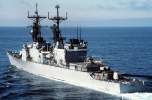 | 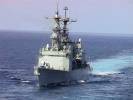 | 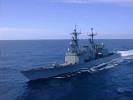 | 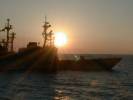 | 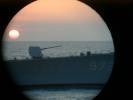 |
The photos below were taken by William Chiu when USS OLDENDORF visited Hong Kong around 1991/1992.
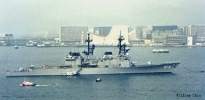 | 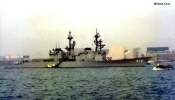 | 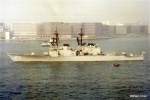 |
 Back to Destroyers list.
Back to Destroyers list.  Back to ships list.
Back to ships list.  Back to selection page.
Back to selection page.  Back to 1st page.
Back to 1st page.